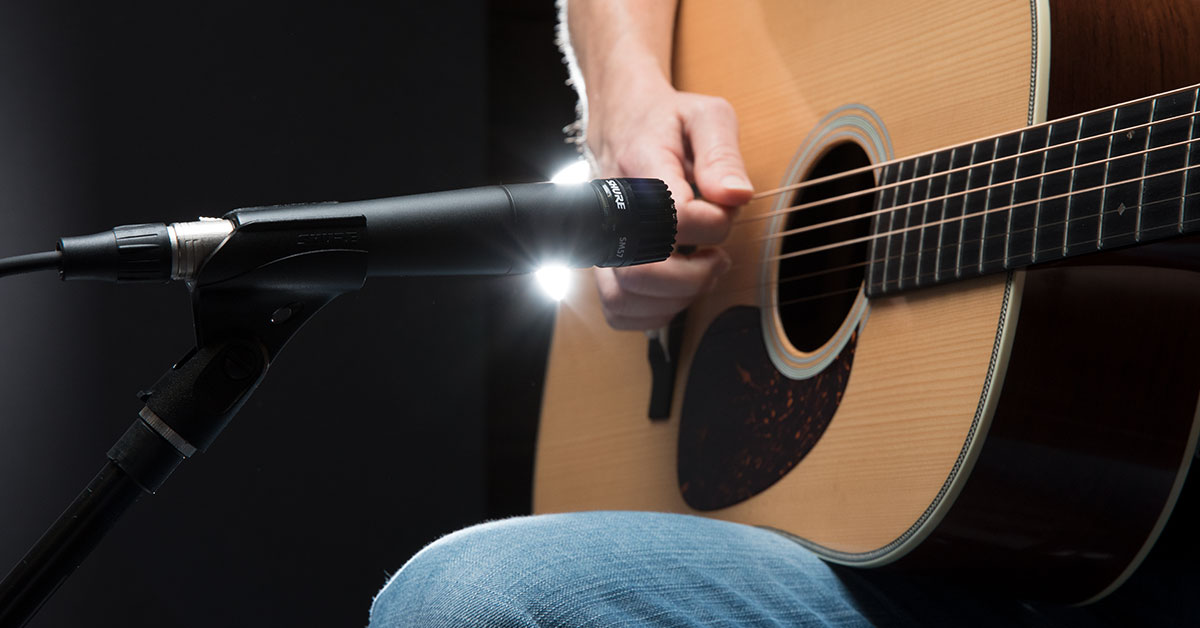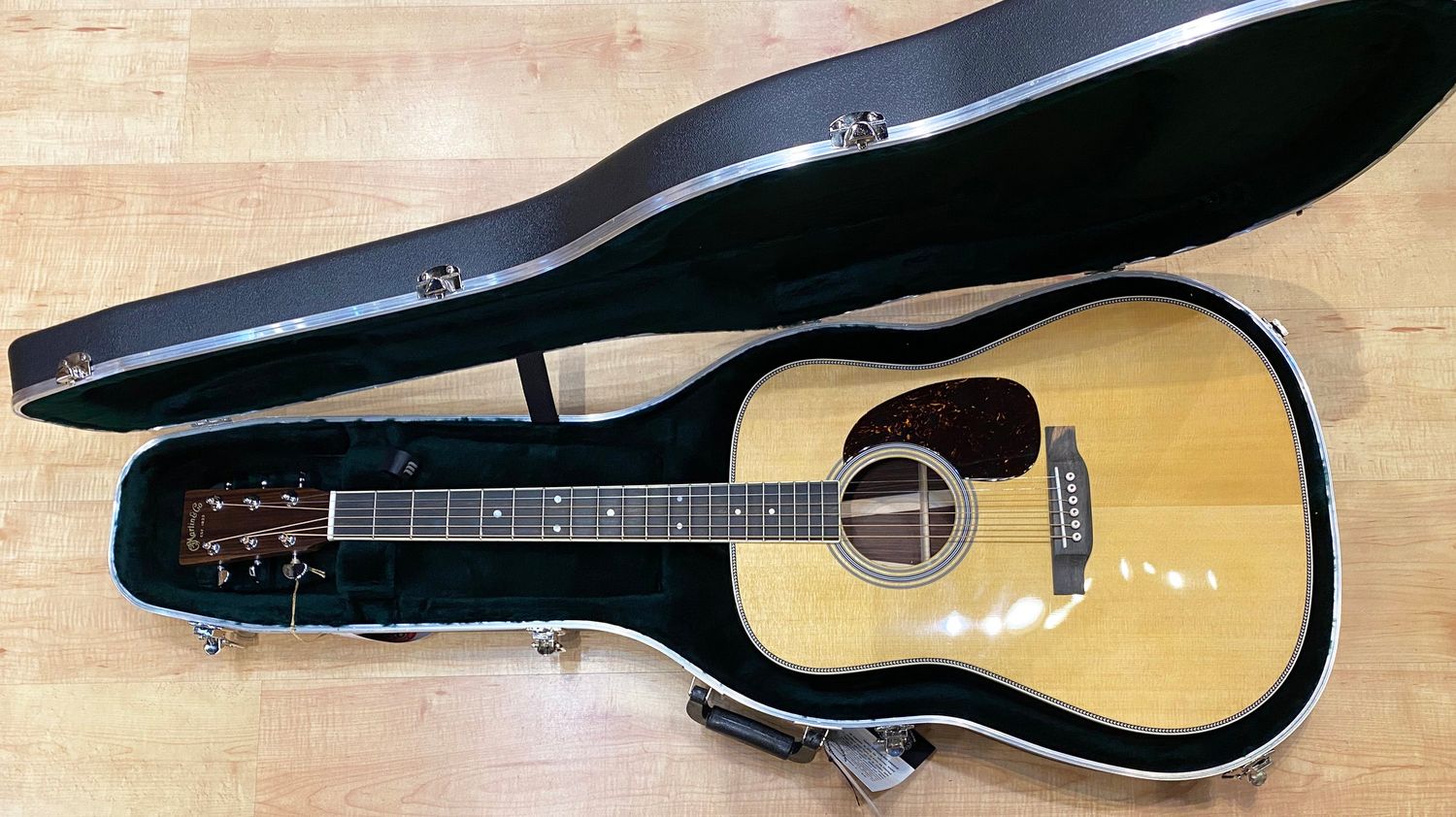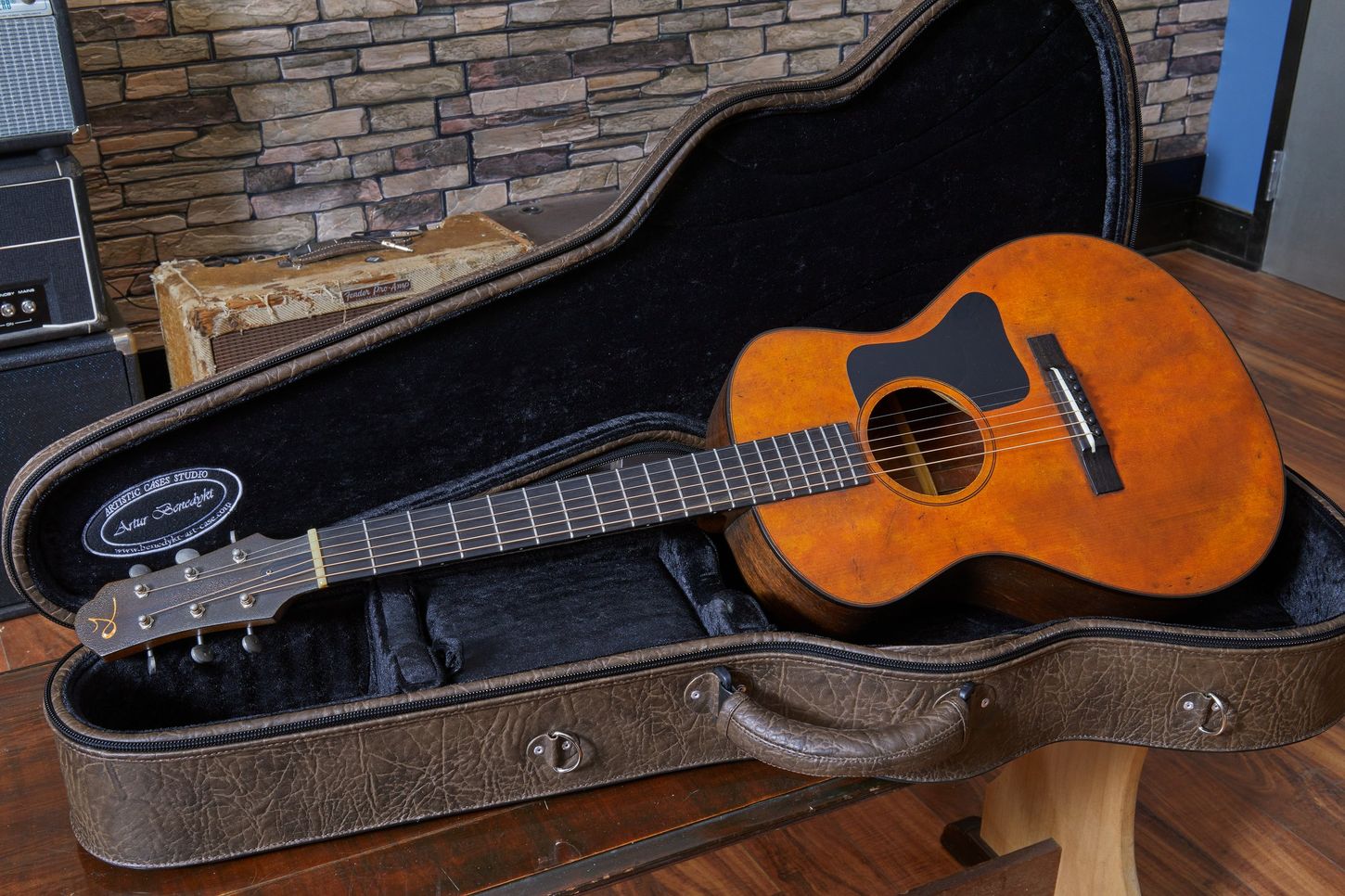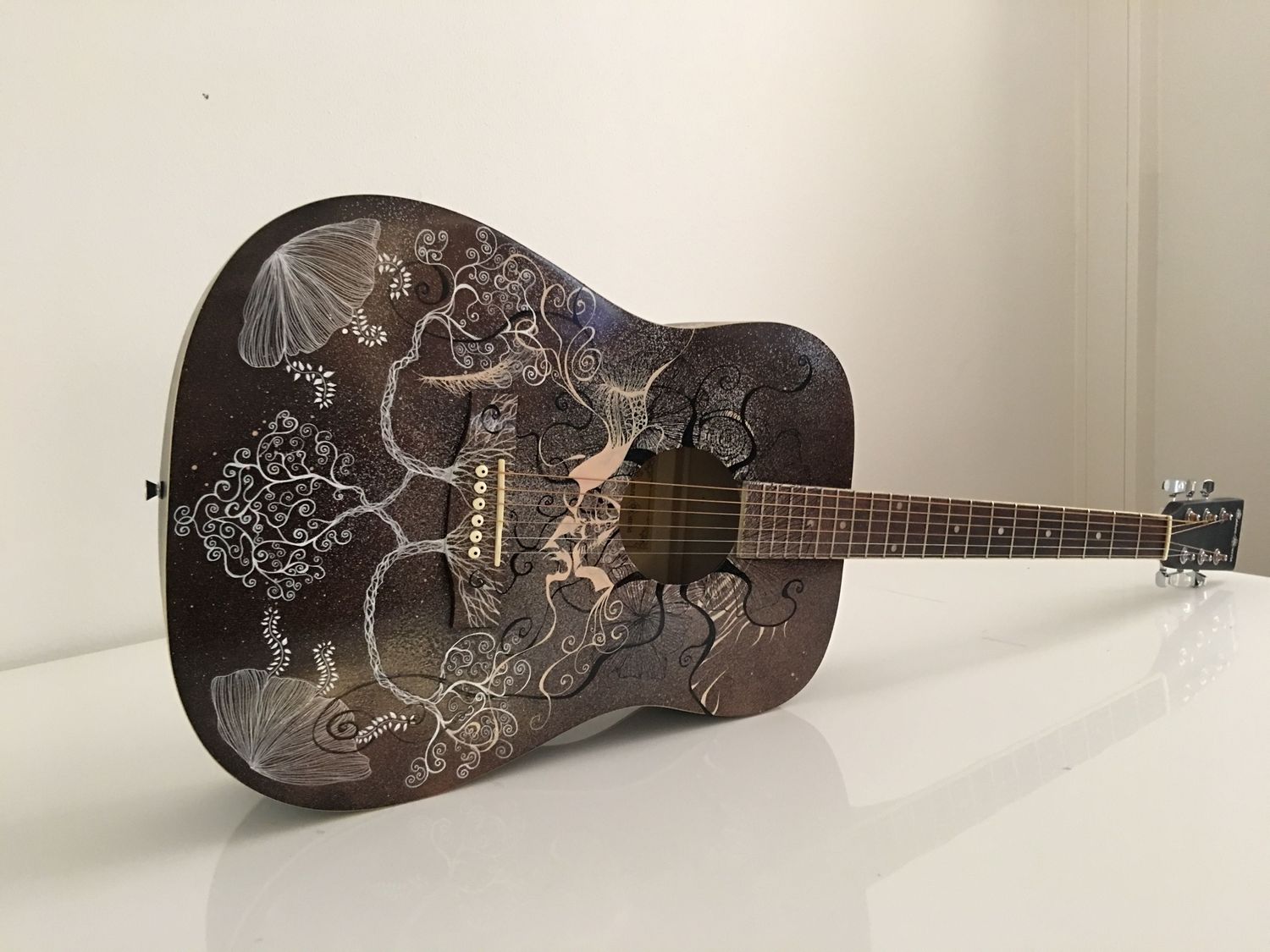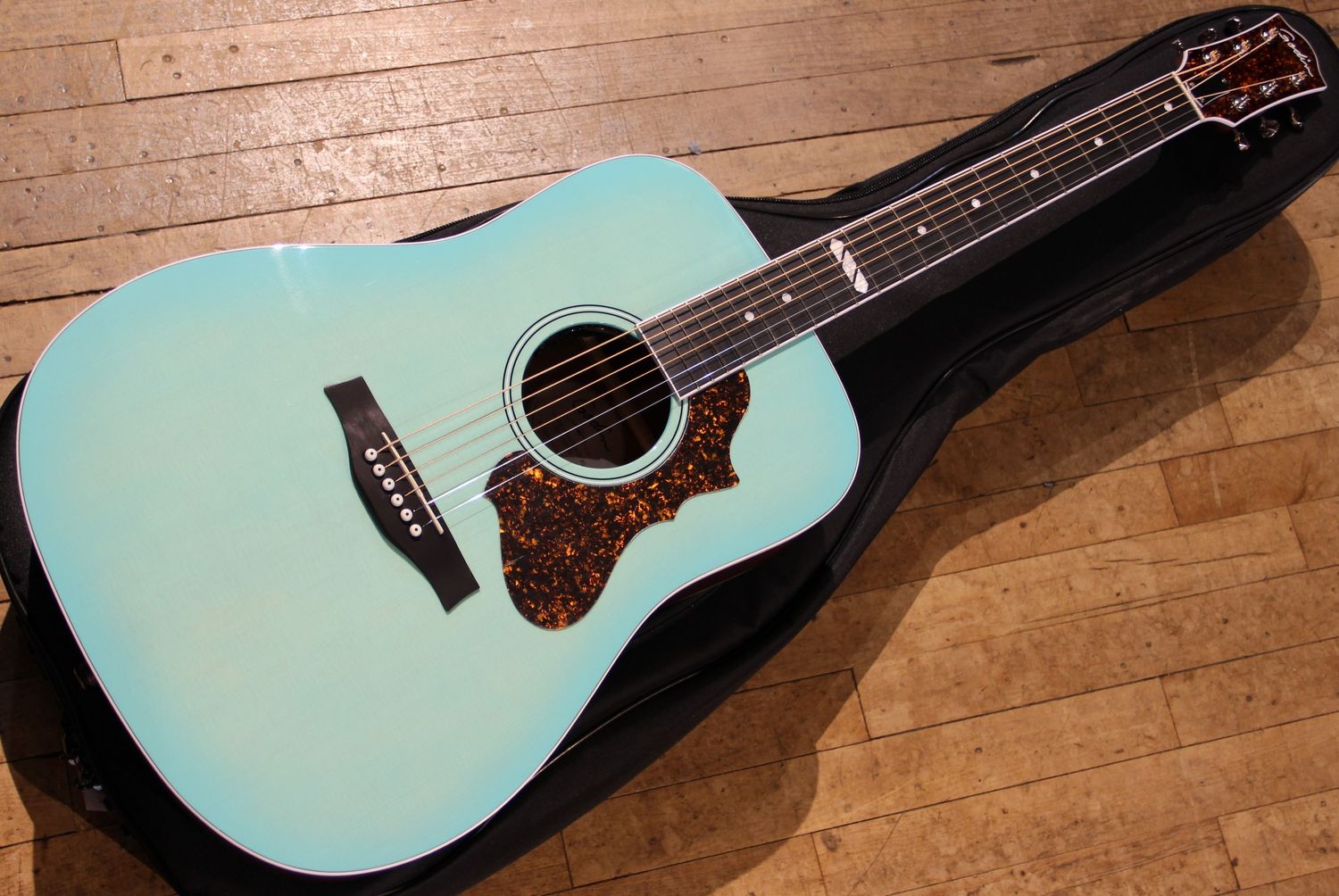Home>Production & Technology>Acoustic>How Much Does An Acoustic Guitar Weigh


Acoustic
How Much Does An Acoustic Guitar Weigh
Published: March 11, 2024
Find out the average weight of acoustic guitars and how it can impact your playing experience. Learn about different factors that contribute to the weight of acoustic guitars.
(Many of the links in this article redirect to a specific reviewed product. Your purchase of these products through affiliate links helps to generate commission for AudioLover.com, at no extra cost. Learn more)
Table of Contents
Introduction
Acoustic guitars are beloved for their rich, resonant tones and timeless appeal. Whether you're a seasoned musician or a budding enthusiast, the weight of an acoustic guitar is a crucial factor to consider. The weight of a guitar can impact comfort, playability, and overall enjoyment, making it an essential aspect of the instrument's design.
Understanding the weight of an acoustic guitar involves delving into various factors that contribute to its overall mass. From the materials used in construction to the type of guitar and individual components, several elements play a role in determining its weight. Additionally, the weight of an acoustic guitar can influence the playing experience, particularly during extended practice sessions or performances.
In this comprehensive guide, we will explore the factors that affect the weight of an acoustic guitar, delve into the average weight of different types of acoustic guitars, and provide valuable tips for managing the weight of your instrument. Whether you're a gigging musician seeking a lightweight travel companion or a studio artist aiming for a robust, resonant sound, understanding the nuances of acoustic guitar weight is essential for making informed decisions.
Join us as we embark on a journey to uncover the intricacies of acoustic guitar weight, empowering you to make well-informed choices and enhancing your musical experience. Let's dive into the world of acoustic guitars and unravel the mysteries behind their weight.
Factors Affecting the Weight of an Acoustic Guitar
The weight of an acoustic guitar is influenced by a myriad of factors, each playing a significant role in determining the overall mass of the instrument. Understanding these factors is crucial for musicians and enthusiasts alike, as it directly impacts the playability, comfort, and portability of the guitar. Let's delve into the key elements that contribute to the weight of an acoustic guitar:
1. Wood Selection:
The choice of wood used in crafting the guitar significantly affects its weight. Different woods have varying densities, with some being lighter and more resonant, while others are denser and heavier. For instance, guitars made from mahogany tend to be lighter compared to those crafted from rosewood, which is denser and adds more weight to the instrument.
2. Body Size and Shape:
The size and shape of the guitar's body play a pivotal role in determining its weight. Dreadnought guitars, known for their larger bodies and robust sound, generally weigh more than smaller-bodied guitars such as parlor or concert models. Additionally, the depth of the body contributes to the overall weight, with thicker bodies adding more mass to the instrument.
3. Bracing and Internal Components:
The internal bracing of an acoustic guitar, which provides structural support and affects the instrument's tonal characteristics, can also impact its weight. Different bracing patterns and materials can add varying amounts of mass to the guitar. Furthermore, the presence of electronics, such as built-in pickups and preamp systems, adds additional weight to the instrument.
4. Neck and Fingerboard Materials:
The choice of materials for the neck and fingerboard can influence the overall weight of the guitar. Guitars with necks and fingerboards made from denser woods, such as ebony or maple, may be heavier compared to those with lighter woods like mahogany or rosewood.
5. Hardware and Tuning Machines:
The hardware components, including the tuning machines, bridge, and nut, contribute to the overall weight of the guitar. High-quality, durable hardware may add extra mass to the instrument, while lighter materials can help reduce its weight.
6. Finish and Decorative Elements:
The type of finish applied to the guitar, whether it's a thin satin finish or a thicker gloss finish, can impact its weight. Additionally, decorative elements such as inlays, binding, and rosettes can add to the overall mass of the instrument.
By considering these factors, guitarists can make informed decisions when selecting an acoustic guitar that aligns with their preferences for weight, tone, and playability. Each element contributes to the unique character of the instrument, shaping its sonic properties and physical attributes. Understanding the interplay of these factors empowers musicians to choose a guitar that not only sounds exceptional but also feels comfortable and manageable during extended playing sessions.
Average Weight of Different Types of Acoustic Guitars
When exploring the world of acoustic guitars, it becomes evident that the weight of the instrument varies across different types and models. Understanding the average weight of various acoustic guitars is essential for musicians seeking an instrument that aligns with their playing style, preferences, and mobility needs. Let's delve into the average weights of different types of acoustic guitars, shedding light on the diverse characteristics that define each category.
-
Dreadnought Guitars:
- Average Weight: 4.5 to 5.5 pounds
- Dreadnought guitars, renowned for their bold, robust sound and versatile performance capabilities, typically exhibit a moderate weight range. The larger body size and solid construction contribute to a slightly heavier build, making them well-suited for players who prioritize resonance and projection.
-
Concert and Grand Concert Guitars:
- Average Weight: 3.5 to 4.5 pounds
- Concert and Grand Concert guitars, characterized by their smaller, more ergonomic bodies, often feature a lighter weight profile. These guitars offer a comfortable playing experience and are favored by musicians seeking a balance of portability and tonal clarity.
-
Parlor Guitars:
- Average Weight: 3 to 4 pounds
- Parlor guitars, celebrated for their vintage charm and intimate tonal character, are notably lightweight. Their compact size and slender build make them an ideal choice for musicians desiring a portable, easy-to-handle instrument with a distinct, mellow sound.
-
Jumbo Guitars:
- Average Weight: 5 to 6 pounds
- Jumbo guitars, known for their bold, booming resonance and expansive sound projection, tend to exhibit a heavier weight profile. The substantial body size and robust construction contribute to their slightly higher mass, catering to players seeking a commanding sonic presence.
-
Travel and Mini Guitars:
- Average Weight: 2 to 3.5 pounds
- Travel and Mini guitars, designed for on-the-go musicians and intimate performances, feature a notably lightweight construction. These compact instruments prioritize portability and comfort, offering a delicate balance of reduced weight and expressive tonal characteristics.
Understanding the average weights of different types of acoustic guitars provides valuable insights for musicians navigating the diverse array of options available. Whether seeking a resonant powerhouse for live performances or a compact companion for travel and intimate settings, the weight of an acoustic guitar plays a pivotal role in shaping the playing experience. By considering the average weights associated with various guitar types, musicians can make informed decisions that align with their musical aspirations and lifestyle preferences.
Tips for Managing the Weight of an Acoustic Guitar
Managing the weight of an acoustic guitar is essential for musicians seeking comfort, mobility, and a seamless playing experience. Whether you're a seasoned performer or an aspiring guitarist, incorporating practical strategies to address the weight of your instrument can significantly enhance your musical journey. Here are valuable tips for effectively managing the weight of an acoustic guitar:
-
Explore Lightweight Materials: When selecting an acoustic guitar, consider models crafted from lightweight materials without compromising on tonal quality. Some guitars feature innovative construction techniques and materials that offer a balance between reduced weight and exceptional resonance. Exploring options with advanced composite materials or alternative wood blends can provide a lighter instrument without sacrificing sound integrity.
-
Opt for Slimmer Body Profiles: Choosing a guitar with a slimmer body profile can contribute to a more manageable weight without compromising on tonal characteristics. Slim-bodied acoustic guitars offer enhanced comfort during extended playing sessions and are well-suited for musicians seeking a lightweight, ergonomic design.
-
Utilize Padded Straps and Ergonomic Accessories: Investing in padded guitar straps and ergonomic accessories can alleviate the physical strain associated with carrying a guitar. Padded straps distribute the weight more evenly across the shoulders, reducing discomfort and allowing for extended playing without fatigue. Additionally, ergonomic accessories such as cushioned armrests and contoured guitar supports can enhance playing comfort and minimize the perceived weight of the instrument.
-
Consider Travel-Friendly Designs: For musicians on the go, exploring travel-friendly acoustic guitars designed for portability and reduced weight can be advantageous. Travel guitars with compact dimensions and lightweight construction are ideal for performers who prioritize mobility without compromising on sound quality. These instruments offer a convenient solution for musicians navigating frequent travel and performance engagements.
-
Regular Maintenance and Setup: Ensuring that your acoustic guitar is properly set up and maintained can contribute to a more comfortable playing experience. Periodic adjustments to the action, neck relief, and overall setup can optimize playability and reduce the physical effort required to play the instrument. Additionally, maintaining a stable humidity level can prevent excessive swelling or contraction of the wood, contributing to a consistent weight and feel of the guitar.
-
Explore Hybrid and Alternative Designs: Exploring hybrid acoustic-electric guitars or alternative design concepts can offer a unique approach to managing the weight of the instrument. Hybrid models often feature innovative construction methods and materials, providing a blend of acoustic resonance and reduced weight. Additionally, alternative designs, such as compact travel guitars or ergonomic shapes, offer inventive solutions for minimizing the perceived weight of the instrument.
By implementing these practical tips, musicians can effectively manage the weight of their acoustic guitars, enhancing comfort, mobility, and overall playing satisfaction. Whether seeking a lightweight travel companion or a comfortable performance instrument, these strategies empower musicians to navigate the diverse landscape of acoustic guitars while prioritizing their individual preferences for weight and playability.
Conclusion
In conclusion, the weight of an acoustic guitar is a multifaceted aspect that significantly influences the playing experience, comfort, and portability for musicians. By delving into the factors affecting acoustic guitar weight, exploring the average weights of different guitar types, and providing practical tips for managing weight, we've gained valuable insights into the intricate world of acoustic guitars.
Understanding the diverse factors that contribute to acoustic guitar weight, including wood selection, body size and shape, internal components, hardware, and finish, empowers musicians to make informed decisions when selecting an instrument that aligns with their tonal preferences and physical comfort. The interplay of these elements shapes the unique character of each guitar, offering a spectrum of tonal qualities and weight profiles to cater to a wide range of musical styles and playing preferences.
Exploring the average weights associated with various types of acoustic guitars provides a comprehensive overview of the diverse options available to musicians. Whether seeking a resonant powerhouse for live performances, a compact companion for travel, or an intimate instrument for studio sessions, understanding the average weights of different guitar types facilitates informed decision-making, aligning with individual musical aspirations and lifestyle needs.
Furthermore, the practical tips for managing the weight of an acoustic guitar offer actionable strategies for musicians to enhance their playing comfort, mobility, and overall satisfaction. By considering lightweight materials, slim body profiles, ergonomic accessories, travel-friendly designs, regular maintenance, and alternative guitar concepts, musicians can effectively address the weight of their instruments, optimizing their playing experience and physical well-being.
In essence, the weight of an acoustic guitar is a pivotal consideration that intertwines with the instrument's tonal characteristics, physical comfort, and practical usability. By navigating the nuances of acoustic guitar weight, musicians can embark on a musical journey enriched by instruments that not only sound exceptional but also offer a comfortable, manageable playing experience.
As we conclude our exploration of acoustic guitar weight, it's evident that this fundamental aspect plays a profound role in shaping the musical landscape, empowering musicians to express their creativity and passion through instruments that resonate with their individuality and artistic vision. Whether strumming vibrant chords, fingerpicking soulful melodies, or crafting captivating compositions, the weight of an acoustic guitar becomes an integral part of the musician's expressive journey, enriching every note and chord with a harmonious blend of sonic allure and physical comfort.





